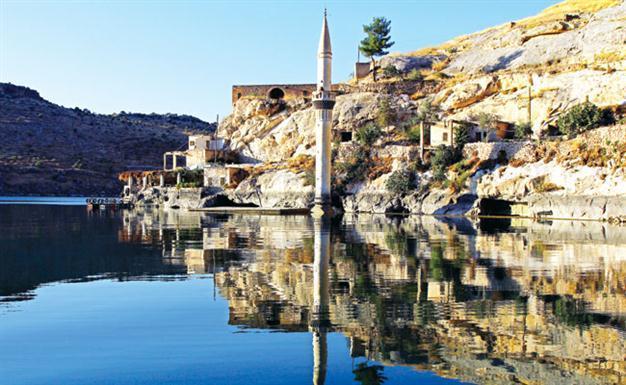Photographs capture life in southeastern Turkey
ISTANBUL - Hürriyet Daily News

The photographs in the exhibition show different aspects of the historical
architecture, the daily life, and the natural features of Turkey’s southeastern region.
A new exhibition at Kadıköy’s Nazım Hikmet Culture Center is featuring the works of four non-professional photographers taken during trips to the southeastern provinces of Gaziantep, Şanlıurfa, Mardin and Batman in 2010 and 2011.
Erbil Köker, Erol Metin, Kemal Vural Tarlan and Tamer Altay’s exhibition opened Feb. 4 and will continue through Feb. 24. It was first displayed in December at the Kırkayak Culture Center in Gaziantep.
The photographs in the exhibition show different aspects of the historical architecture, the daily life, and the natural features of the region. The photos either focus on a particular detail or portray the local people. The photos were taken in the city center of Gaziantep, the center of Şanlıurfa and its Halfeti and Harran districts, the city of Mardin and its Midyat district, as well as Batman’s Hasankeyf district, Köker told the Hürriyet Daily News.
During the photography trips, the group had unforgettable experiences, including staying with a local in the village of Savaşan in Halfeti, Köker said.
“We only knew his first name, which was Mehmet. Savaşan has been buried under dam water for a long time, and Mehmet and his wife are the last residents in what remains of the village. Some of his children are now living in Germany and some in Istanbul. But he and his wife come to stay in their home village for a few months every year. From his story, we learned how strongly a person can be tied to their homeland,” he said.
He also said they were all very impressed with the unique nature of the region and the warmth of its people.
Particularly unforgettable was a trip to see the determination of people riding their motorbikes all the way to Göbeklitepe in Şanlıurfa to see the area’s ongoing archaeological excavations, he said.
Köker said the way they approached the locals really helped them receive cooperation in return.
“We expressed our wish to take their photographs in a friendly way, without a ‘take a picture and go’ attitude but through long conversations and without interfering with the natural flow of their daily life. In the end, for us, photography is a means to know and show,” he said.
Turkey, Southeastern Turkey, Kurdistan, Anatolia,
